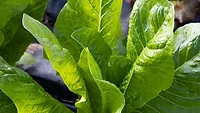Study Identifies Why Some Leafy Greens are Less Susceptible to E. Coli Than Lettuce; Finds Natural Antimicrobial Effect of Kale, Collards

Image credit: Eva Bronzini via Pexels
A recent study conducted by researchers from the University of Illinois Urbana-Champaign has identified factors that determine the susceptibility of different leafy greens to foodborne Escherichia coli, including storage temperatures, leaf roughness, and natural wax coating.
Although there exists extensive research on microbiological contamination of romaine lettuce, which has caused numerous foodborne illness outbreaks in the past decade, there is far less literature regarding other leafy greens, like green-leaf lettuce, spinach, kale, and collard greens. To fill this knowledge gap, the researchers included all five of the aforementioned leafy greens in their study (romaine, green-leaf lettuce, spinach, kale, and collards).
First, whole leaves from each of the five types of leafy greens were inoculated with E. coli O157:H7, and were observed after storage at 4° C (39° F), 20° C (68° F), and 37° C (98.6° F). In general, the researchers found that susceptibility to E. coli was determined by a combination of temperature and leaf surface properties such as roughness and the natural wax coating.
E. coli was seen to proliferate quickly on lettuce stored at room temperature or higher, while a significant drop in E. coli was observed when the lettuce samples were kept refrigerated at 4° C (39° F). The opposite trend was noted for waxy greens like kale and collard greens, however, on which E. coli grows slower at warmer temperatures but can survive longer under refrigeration. Still, the researchers explain that E. coli contamination is less of a food safety concern for vegetables like kale and collards, which are less susceptible to the pathogen overall and are often subjected to a final kill step like cooking, versus lettuce, which is consumed raw.
The researchers also introduced E. coli to leafy greens with damaged leaf surfaces to compare the bacterial growth against that of E. coli on intact leaves. Lettuce again acted differently than spinach, kale, or collard greens. While cut lettuce leaves release fluid that stimulates bacterial growth, the juice of spinach, kale, and collard samples exhibited antimicrobial properties that discouraged E. coli growth. To further explore these findings, the “juice,” or lysate, was isolated from kale and collards and was applied to lettuce leaf samples, and the same antimicrobial activity was observed. The researchers underline this finding as having potential for foodborne pathogen control applications at pre- and postharvest.
Looking for quick answers on food safety topics?
Try Ask FSM, our new smart AI search tool.
Ask FSM →









